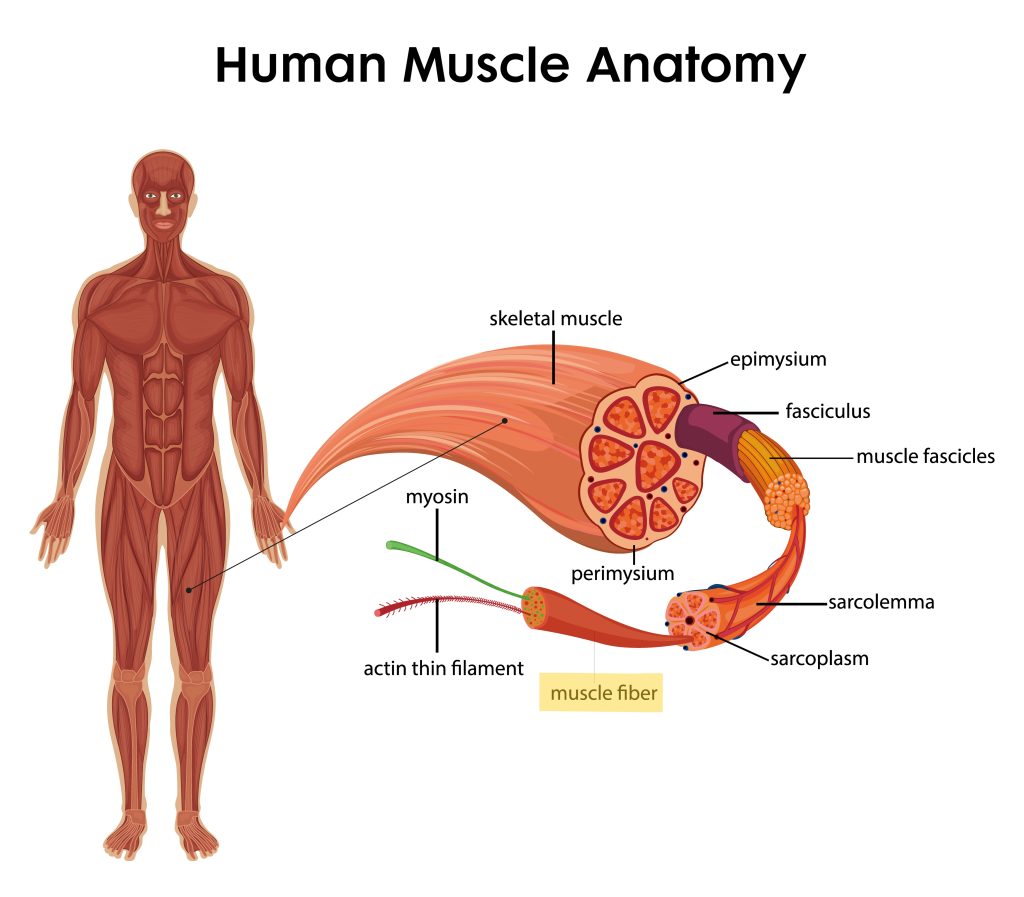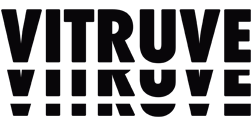11 de September de 2025
Types of Muscle Fibers: Type I vs Type II
Every strength and conditioning coach knows that not all muscle fibers are created equal. Understanding the differences between type I muscle fibers vs. type II is essential for designing effective programs that maximize strength, power, and endurance. Athletes in the NCAA, NFL, MLS, and other elite levels adapt differently depending on the dominant fiber types recruited in training.
What are type I muscle fibers?
Type I fibers, also known as slow-twitch fibers, are specialized for endurance and efficiency. These fibers contract more slowly but are highly resistant to fatigue, making them the foundation for sustained performance in long-duration activities.

Characteristics of type I fibers
- High resistance to fatigue: Their ability to sustain contractions over time comes from abundant mitochondria and dense capillary networks.
- Lower force production: Compared to fast-twitch fibers, they generate less maximal force, but they excel at maintaining steady outputs.
- Greater oxygen utilization: Type I fibers rely primarily on aerobic metabolism, meaning they use oxygen efficiently to produce energy through oxidative pathways.
- Rich in myoglobin: Their reddish color comes from high myoglobin content, which stores and transports oxygen inside the muscle.
Performance outcomes
- Endurance capacity: Type I fibers are crucial for activities like long-distance running, swimming, rowing, or cycling, where the ability to sustain effort outweighs the need for maximal power.
- Stability and posture: These fibers are also heavily recruited in stabilizing muscles that maintain posture and joint integrity during prolonged activity.
- Energy efficiency: Athletes with a higher proportion of type I fibers can perform submaximal tasks with less energy expenditure, delaying fatigue during competition.
Why type I fibers matter in elite training
For coaches, understanding type I fiber recruitment is essential when programming conditioning work:
- Soccer and basketball players benefit from well-developed type I fibers to sustain repeated efforts over 90+ minutes.
- Track athletes in longer events rely on slow-twitch fibers to maintain pace without premature fatigue.
- Mixed-sport athletes require a balance—strong endurance qualities from type I fibers combined with the explosive output of type II fibers.
In high-performance settings, optimizing type I fiber capacity ensures that athletes can tolerate greater training volumes, recover efficiently, and maintain performance deep into competition.
What are type II muscle fibers?
Type II fibers, also called fast-twitch fibers, are designed for rapid, high-force contractions. Unlike type I fibers, which rely primarily on aerobic metabolism, type II fibers depend more on anaerobic energy pathways. This allows them to produce explosive bursts of strength and speed, but at the cost of quicker fatigue.
These fibers are not uniform—there are two primary subtypes, each with unique physiological and performance characteristics:
Type IIa (fast oxidative fibers)
- Moderate resistance to fatigue: They bridge the gap between endurance and explosiveness, using both aerobic and anaerobic systems.
- Higher force output than type I fibers: They produce more power per contraction while still sustaining effort longer than IIx fibers.
- Versatility in sport: Commonly recruited in activities that mix endurance and power, such as 400–800m sprints, basketball, or soccer, where repeated high-intensity bursts are required.
- Adaptability: With training, IIa fibers can shift characteristics toward either greater endurance (becoming more oxidative) or higher explosiveness (becoming more glycolytic).
Type IIx (fast glycolytic fibers)
- Lowest fatigue resistance: These fibers rely almost exclusively on anaerobic metabolism, depleting energy rapidly.
- Highest force and contraction speed: They are capable of generating maximal force in the shortest possible time.
- Specialized recruitment: Activated during near-maximal efforts such as Olympic lifts, vertical jumps, sprints under 100m, or heavy resistance training.
- Explosive strength: They are the foundation of explosive power and short-duration maximal efforts.
Why type II fibers matter in elite training
For coaches, developing type II fibers is critical in sports where acceleration, agility, and peak force separate winners from competitors:
- Sprinters and jumpers depend on IIx fibers to produce maximal speed and vertical leap.
- Football and rugby players use type II fibers in collisions, tackles, and short sprints.
- Weightlifters and throwers rely on them to generate force rapidly against high loads.
Because type II fibers fatigue quickly, programming must balance intensity with recovery. This is where velocity-based training (VBT) provides an edge: monitoring velocity zones allows coaches to optimize fast-twitch recruitment while avoiding unnecessary fatigue accumulation.
Type II fibers, especially IIx, are essential for generating the explosive strength and maximal power output that define high-performance athletes.
Type I muscle fibers vs. type II: Key differences
When comparing type I muscle fibers vs. type II, the differences go far beyond contraction speed or fatigue. Each fiber type is specialized for distinct energy pathways, performance outcomes, and sporting demands. For coaches, understanding these contrasts is key to tailoring strength training and conditioning programs to athlete needs.
| Feature | Type I (Slow-twitch) | Type IIa (Fast oxidative) | Type IIx (Fast glycolytic) |
|---|---|---|---|
| Contraction speed | Slow | Fast | Fastest |
| Force production | Low | Moderate to high | Very high |
| Fatigue resistance | Very high (sustain effort for long durations) | Moderate (can repeat efforts but fatigue faster than type I) | Very low (fatigue in seconds) |
| Energy system | Aerobic (oxidative metabolism) | Mixed: aerobic + anaerobic | Anaerobic (glycolytic) |
| Sports example | Marathon running, cycling, triathlon, soccer (long match endurance) | 400–800m sprinting, basketball, soccer (repeated high-intensity efforts) | 100m sprinting, Olympic weightlifting, American football, rugby |
| Training focus | High-volume endurance, submaximal loads, posture and stabilization work | Hybrid training—strength + conditioning, velocity-based strength development | Maximal lifts, explosive strength, plyometrics |
Practical takeaway for coaches
- Type I fibers: Build an athlete’s aerobic base, allowing them to tolerate volume and recover faster.
- Type IIa fibers: Represent the versatile middle ground, adapting based on training—toward endurance with aerobic work or toward explosiveness with high-intensity resistance.
- Type IIx fibers: Deliver maximal force and speed but fatigue rapidly, making them the cornerstone of short, explosive efforts.
By understanding these distinctions, coaches can leverage tools like velocity-based training (VBT) and load-velocity profiling to optimize training stimuli for both endurance and power athletes.
Training implications for coaches
The balance of fiber type recruitment determines how athletes respond to training stimuli:
- Endurance athletes
- Rely more on type I fibers.
- Benefit from high-volume, lower-intensity training.
- Relative strength training is key to maintain efficiency without excessive body mass.
- Power and strength athletes
- Depend heavily on type II fibers.
- Require maximal effort, high-intensity lifts, and plyometrics.
- Tools like velocity-based training (VBT) help target the right velocity zones to maximize recruitment.
- Mixed-sport athletes (soccer, basketball, hockey)
- Need to develop both endurance and explosive output.
- Coaches should alternate training blocks focused on type I endurance adaptations and type II power development.
How to monitor fiber-type adaptations
While genetic predisposition influences fiber distribution, training can shift characteristics, particularly between type IIa and type IIx fibers. With a barbell velocity tracker, coaches can:
- Track improvements in bar speed (fast-twitch recruitment).
- Monitor fatigue levels to ensure endurance adaptations.
- Build individualized load-velocity profiles to optimize both strength and endurance qualities.
Understanding the balance between type I muscle fibers vs. type II gives coaches the tools to program more effectively. Endurance sports thrive on the efficiency of type I fibers, while power and strength sports rely on the explosiveness of type II.
With the Vitruve linear encoder and Teams App, you can measure real-time adaptations, monitor progress, and tailor training to maximize fiber-specific performance.
Explore how Vitruve can help you design smarter, data-driven programs.
